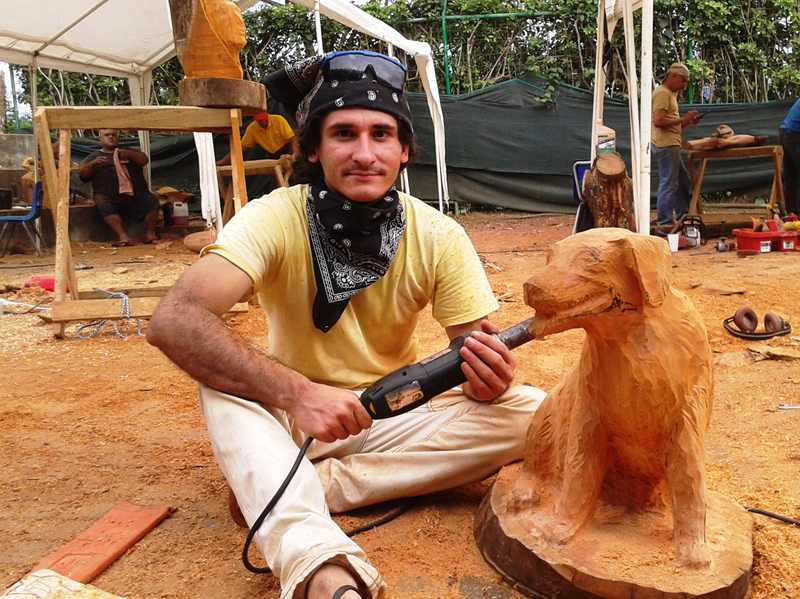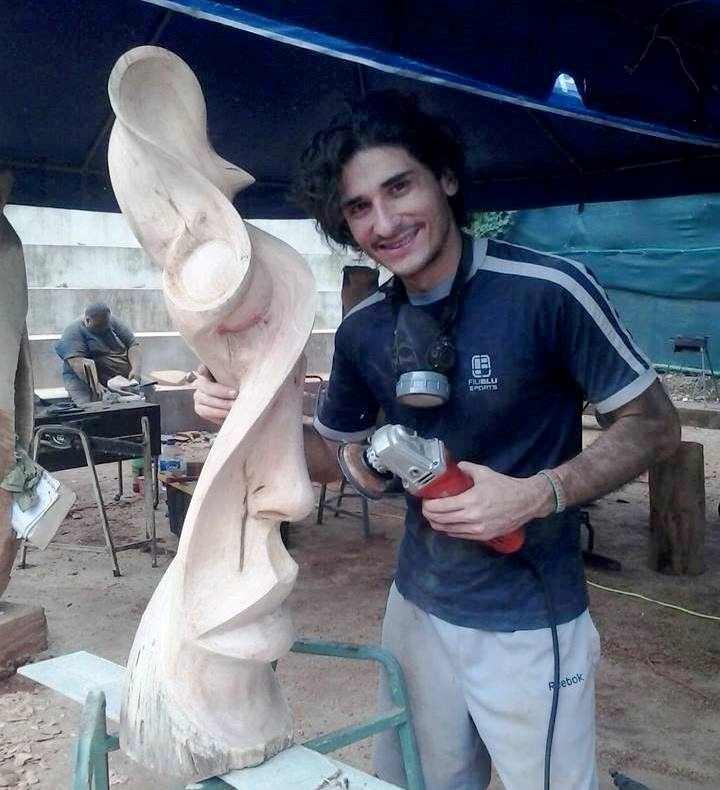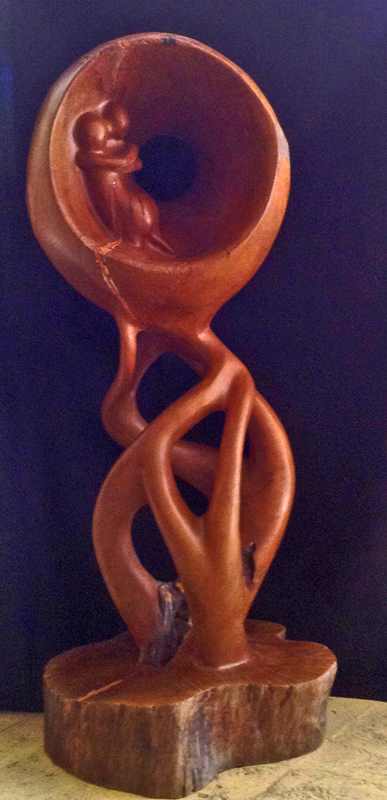
Spotlight – David Villalobos, The Young and the Restless
Could you live in a world without your cell phone? No internet or computer? Now age 32, Costa Rican sculptor David Villalobos didn’t have his first electronic communications until a mere seven years ago. Without it, he had a lot of time to develop his many talents and more importantly, to learn about himself and emerge as a confident and creative young man.
Primarily self-taught, Villalobos has learned to be ever-changing, like a chameleon adapting to his surroundings, allowing him to express his art and practice his numerous hobbies. Multi-linguistic, now computer savvy, and with strengths in many stringed musical instruments, David’s most prevailing gift is his sculpting.
Wanting to become a painter during his high school years, David ultimately decided to learn more about sculpting. Initially terrified at the sight of all the power tools used for carving, little by little, with mentoring by several family members, he became self-assured in their use. At some point, it became natural and those tools became an extension of his hands.
“When growing up under someone else’s education, you have a tendency to become like the teacher,” David says. “But there is a point when all artists need to go on their own journey to express their unique theme and language.”
Villalobos reached that point swiftly. Sometimes creating sketches as a guide, he has also learned to improvise in order to create the magical piece that becomes exposed in his mind as he sculpts.
Having participated in numerous exhibits in Costa Rica, David has also contributed to many public activities and symposiums. One of the public venues was the Parque las Esferas in Palmar Sur in south Puntarenas, where David and other artists went to create their own work amidst the pre-Columbian stone spheres.
Admiration for figurative art has always been top-of-mind for David, who tends to focus on the human body and its many parts.
“When art is an expression, it has a life of its own, and that makes me feel totally satisfied. Art is an idealistic way of expressing oneself or saying something will last longer than you or me.”
But what inspires him most is nature. David’s quest for fallen wood is always an adventure, he tells us. In search of just the right piece for Amor Costarricense/Costa Rican Love, he recalls his trip to the farm where the ideal trunk was found. He knew right away it was the perfect piece for a sphere that would sit atop root formations, letting the idea come naturally as he worked on the piece.
“I wanted to express a hug, a natural expression of love,” Villalobos says of the largest sculpture he had done to date. Although not without some fear and apprehension, Costa Rican Love was a journey he overcame with an exquisite ending.
Survival of the generations was a huge inspiration for the sculptor’s El Legado de Sembrar/The Legend of Planting.
“Some of us only know how to get to a supermarket,” David muses, “but of course there are many back stories to that. I wanted to depict the timing and evolution of cultivating, and the inheritance of knowledge from generation to generation on providing food to the world.”
Always working on multiple projects, David sees himself as a combined environmental activist and artist. Currently building an off-the-grid wilderness retreat to share with other artists, he considers its construction one of the most beautiful experiences he has had.
“I think art is potentially the tool that makes me creative all the time, regardless of what I am doing. I feel so happy when I design a place, working with the land and organic materials, or working with recycled materials to try to give new life to something old.”
The Hidden Garden Art Gallery offers a permanent exhibit of David’s sculptures. Stop in for a visit to enjoy his extraordinary talents. Gallery hours are Tuesday to Saturday from 10 am to 4 pm, and admission is free. For more information contact us at info@HiddenGardenArt.com, or visit us online at www.HiddenGardenArt.com



